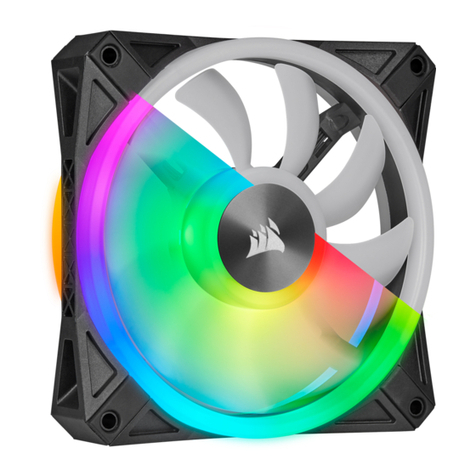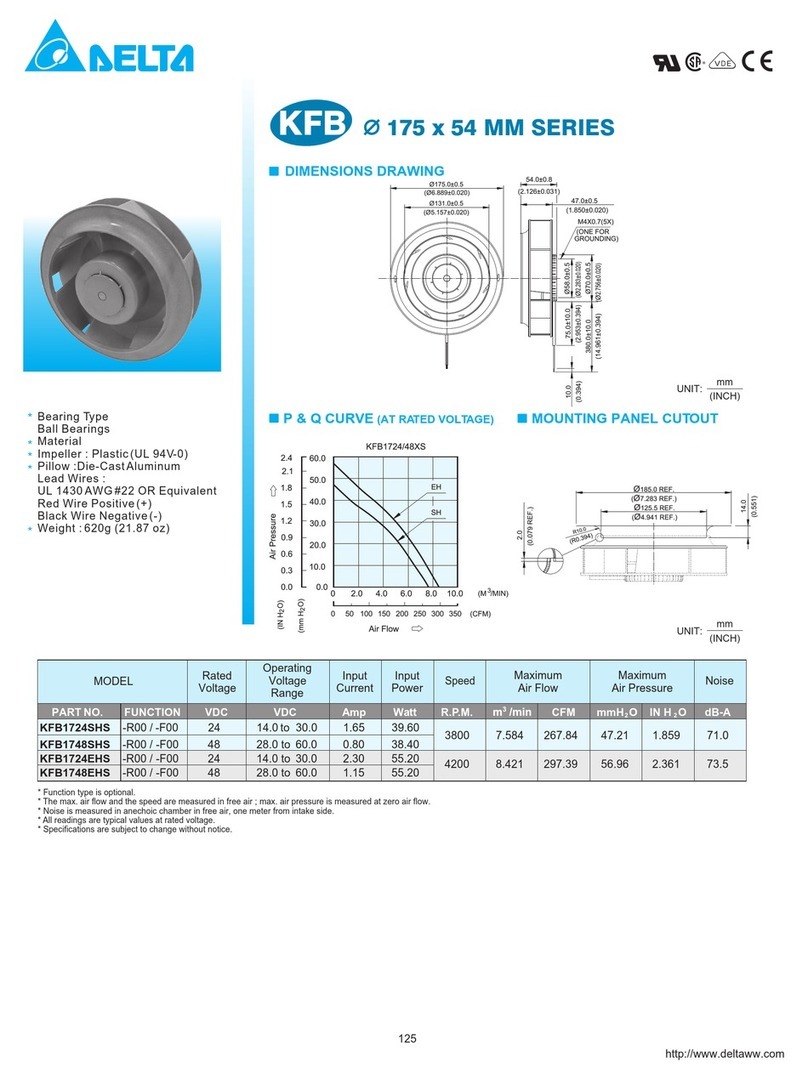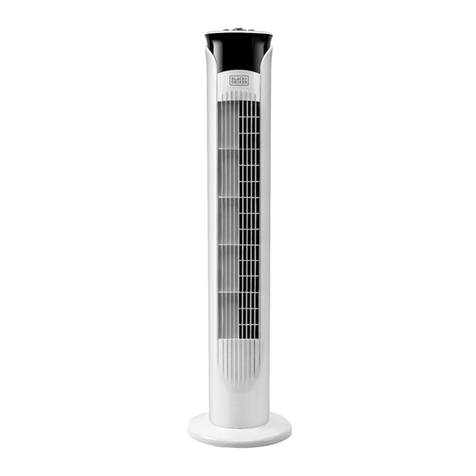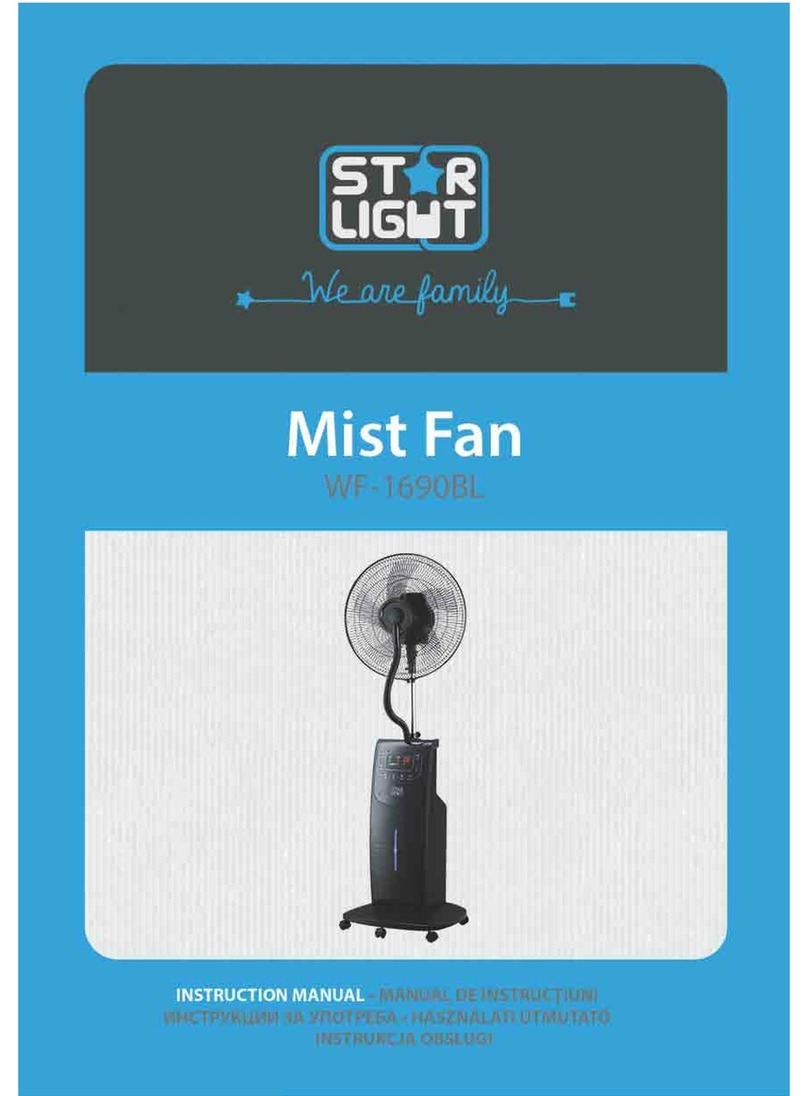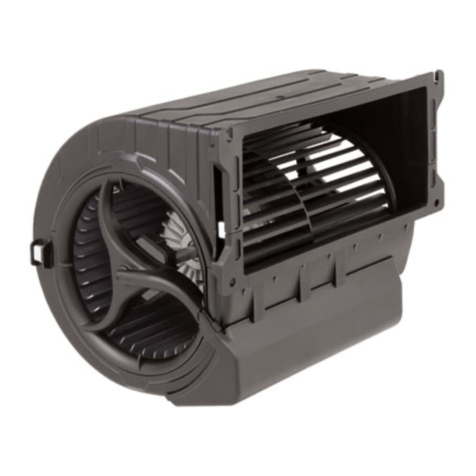Grant Instruments R Series User manual

Operating instructions
Low temperature
bath/circulator
R series

Page 2
Low temperature bath/circulator
Operating instructions
Version 3 - May 2005

Contents
1 Safety......................................................................................4
2 Getting Started.......................................................................6
3 Operation ...............................................................................8
2.1 Unit overview
2.2 Unpacking
2.3 Installation
3.1 Controls and features
3.2 Rear panel reference and description
3.3 Thermostat unit
3.4 Filling
3.5 Switching ON and setting up
4 Specific examples................................................................12
5 Fault diagnosis.....................................................................15
6 Technical specification........................................................17
7 Pump specifications.............................................................19
8 Maintenance..........................................................................21
9 Guarantee and service.........................................................22
7.1 Cleaning
7.2 Replacement of fuses
Page 3
Low temperature bath/circulator
Operating instructions
Version 4 - Jan 2010

1 Safety
The following symbols mean:-
Caution: Read these operating instructions fully before use and pay particular attention to
sections containing this symbol.
Caution: Surfaces can become hot during use.
Always observe the following safety precautions.
Use only as specified by the operating instructions, or the intrinsic protection may be impaired.
After transport or storage in humid conditions, dry out the unit before connecting it to the supply voltage.
During drying out the intrinsic protection may be impaired.
Connect only to a power supply with a voltage corresponding to that on the serial number label.
Ensure that the mains switch and isolating device (power supply connector) are easily accessible during use.
Connect only to a power supply which provides a safety earth (ground) terminal.
Before moving, disconnect at the power supply socket.
Do not touch surfaces which become hot during high temperature operation.
Ensure that the operating temperature is less than the maximum operating temperature of your sample
material.
Do not block or restrict ventilation slots.
If liquid is spilt inside the unit, disconnect it from the power supply and have it checked by a competent
person.
Do not check the temperature by touch, use the temperature display (where applicable) or a thermometer.
To reduce the risk of eye injury during high temperature operation, use safety goggles or spectacles.
1. Safety
Low temperature bath/circulator
Operating instructions
Page 4
Version 4 - Jan 2010

It is the user's responsibility to carry out appropriate decontamination if hazardous material is spilt on or
inside the equipment.
Do not connect to a power supply or switch on before filling the tank.
Take care when topping up or draining, as the liquid in the tank may be very hot or cold.
If the alarm lamp is illuminated do not touch the liquid or the tank base, they may be very hot. Refill
carefully, a hot heater can cause a spattering of very hot water droplets and scalding steam.
Always use a lid or polypropylene spheres when operating above 60°C. Take care when raising and
removing the lid, it may be hot. Steam and hot vapours can cause scalding.
Drain before moving the bath. Before draining allow the liquid to cool to below 50°C.
Use only liquids specified in the operating instructions, within the specified temperature range. If the alarm
lamp is illuminated the liquid temperature may be above its recommended maximum: do not inhale the
vapours given off as they may be toxic; liquids should be safely discarded and replaced.
When pumping to external apparatus, always use connecting pipe or hose suitable for the operating
temperature and liquid used, and check that the pipe connections are secure.
Do not use Silicone tubing when pumping Silicone oil.
Do not disconnect any pipes or hoses while they contain very hot or cold liquid.
Refrigerated circulators are heavy, take care when lifting or moving; empty weights vary from 24kg to 88kg.
Do not touch condenser fins, they are sharp and may cut.
Page 5
Low temperature bath/circulator
Operating instructions
Version 4 - Jan 2010

2. Getting started
2.1 Unit overview
2.2 Unpacking
Optima low temperature circulators provide a source of cooling for many sensitive
analytical procedures. Applications requiring the precision temperature control of
samples include spectrophotometry, viscometry, refractrometry and electrophoresis.
Grant’s range of more powerful chillers are ideally suited for applications requiring the
removal of the mechanical or electrical heat produced in apparatus or machinery,
combined with a higher pressure flow for faster heat removal within restricted systems.
Remove packing materials carefully, and retain for future shipment or storage of the unit.
Packs should contain:
2.3 Installation
To avoid condensation on internal components, allow the unit to reach room temperature
before switching it on.
Let the unit stand in its intended working position for 6 hours before switching on. This is
to allow the oil to drain to the bottom of the compressor.
Position the equipment so that there is free air flow through it. Allow at least 100mm
clearance from obstructions on all sides.
COOLER UNIT
Lid
Mains cable
Communications cable
Interconnecting power cable
Operating instructions
Operating voltage
R1R1 R2 R3 R4 R5 R1L R2L R3L R4L
240V 240V 240V 240V 240V 115V 115V 115V 115V
Page 6
Low temperature bath/circulator
Operating instructions
Version 4 - Jan 2010

2.3.1 Assembly - All models (see Fig 1)
Remove the thermostat mounting plate from the tank by unscrewing the four black knobs
located in the corners of the plate (1a).
Feed the Optima thermostat through the hole in the bridge plate, being careful not to
force it. The thermostat can be located either facing forward or facing to the left. In either
position three of the holes in the mounting plate will line up with holes in the thermostat
unit (1b). Screw together using M3x6 stainless steel screws supplied with the thermostat
unit.
Reattach mounting plate to unit (1c).
2.3.2 Power Supply R1, R2, R3 (see Fig 3a/3b)
Power Supply R4,R5 (see Fig 3c)
Power Supply - 115v models (see Fig 3d/3e/3f)
The Thermostat unit takes its power from the mains socket outlet ( ) on the rear of the
cooler unit, via the interconnecting power cable.
Plug one end of this interconnecting cable into the power inlet socket on the rear of the
Thermostat unit and the other end into the socket outlet ( ) mounted on the rear of the
cooler unit.
Plug the mains cable (supplied with Optima thermostat) into the fused power inlet socket
( ) on the rear of the cooler unit.
The Thermostat unit is connected from the twin fused power inlet socket directly to the
mains with the IEC cable supplied with the Optima Thermostat. The refrigeration unit is
connected from the twin fused power inlet socket ( ) directly to the mains with the IEC
cable supplied with the Refrigeration unit.
The Thermostat unit is connected via its power cord directly to the mains . The
refrigeration unit is connected via its power cord directly to the mains.
Fig 1a Fig 1b Fig 1c
screw
screw
screw
Page 7
Low temperature bath/circulator
Operating instructions
Version 4 - Jan 2010
2
2
3
3

3. Operation
3.1 Controls and features (see Fig 2)
With the switch in the position the minimum operating temperature is 5°C.
Below this, the cooling will be switched off by a low temperature protecting
thermostat. If water is used in the bath this will prevent it from freezing. In the
position the thermostat is bypassed allowing the unit to
run at its minimum temperature.
To drain the unit first connect a suitable length of hosing
with a bore of 12.7mm (½’') to the drain insert. Have the
non connected end of tubing in a receptacle, suitable for
the liquid to be drained. Push the drain insert into the
drain body and let the liquid drain. To release the drain
insert push down the grey button on the drain body. Liquid
to be drained should not be below 10°C or above 40°C.
Enables access to the condenser for easy cleaning.
Refrigeration unit power (mains) switch.
Over temperature protection re-set.
5° Switch.
Drain/ Drain insert (not fitted on R1/R1L Models).
Removable grille
The unit is protected from over heating by the over temperature cut-out. This
will be actuated between 110°C and 120°C. To re-set the unit first wait for the
liquid to cool below 100°C. Un-screw the black cap, under this is the re-set
button, push in to re-set.
A
B
C
D
E
Fig 2
Page 8
Low temperature bath/circulator
Operating instructions
Version 4 - Jan 2010
A
B
C
D
E

3.2 Rear panel reference and description (see Fig 3)
IEC outlet to accessory pump.
IEC outlet to Optima Thermostat unit.
IEC inlet to Refrigeration unit with integral twin fuse draw.
Communications link socket. The refrigeration unit may be controlled with an
Optima GR150 or GP200 thermostat unit. This is done by linking the
thermostat to the refrigerator with the communications lead supplied. (See specific
examples in section 4)
Fuse protection for the Communications Lead.
Mains input cable.
Mains input fuse holders.
FUSE
250mA(T)
5
4
3
1
FUSE
250mA(T)
54
2
3
1
1
2
3
Fig 3a
R1
Fig 3b
R2/R3
Fig 3c
R4/R5
Page 9
Low temperature bath/circulator
Operating instructions
Version 4 - Jan 2010
1
2
3
4
5
6
7

3.3 Thermostat unit
Allowable temperature range with suitable Refrigeration Units:
For information on operating the Optima Thermostat Units refer to the following operating
instructions ( as supplied with the units):
GA100, GD100, GD120...................Part No.17090
GR150, GP200................................Part No. 17091
Max. temperature ºC
Min. temperature ºC
R1
100
-20
R2
100
-20
R3
100
-30
R4
100
-30
R5
100
-47
REFRIGERATION UNIT
Max. temperature ºC
Min. temperature ºC
Pump
Use with communications cable
GA100
99
0
GD100
99
0
GD120
99
-20
ü
GR150
99
-50
ü
ü
GP200
99
-50
ü
ü
OPTIMA UNIT
Fig 3d
R1L
Fig 3e
R2L/R3L
Fig 3f
R4L
1
7 7
6
FUSE
250mA(T)
1
7 7
6
5 4
6
AA
B
B
DE
AA
FUSE
250mA(T)
77
1
4 5
.
Page 10
Low temperature bath/circulator
Operating instructions
Version 4 - Jan 2010

3.4 Filling
Before filling the tank, disconnect the mains power supply.
Allow for thermal expansion and contraction of the liquid and for any liquid in external
circulation paths.
DO NOT SWITCH ON before filling the tank.
Switch the power on at the front of the refrigeration unit and at the front of the
Thermostat unit. Check that the display lamp is illuminated.
In section 4, are examples of setting up the refrigerator and the thermostat unit.
Note: Water from a drinking source and deionised water are suitable for use in the
circulators. However, some older deionisers can create concentrated salt solutions for a
short time after the ioniser is rejuvenated. This solution should not be used in the
circulators as it may cause corrosion.
WARNING: The equipment must be earthed (grounded). It is protected by internal
electrical fuses. We strongly recommend that the power supply to any equipment for
heating liquids should include a residual-current circuit breaker (earth leakage trip).
Check that the voltage rating of the products, given on the serial number plate at the
power cable entry, is correct for your supply.
To perform programmed control functions on the Optima refrigeration units you require
either a GR150 or GP200 Optima thermostat. All the refrigeration units can be controlled
except the R1.
3.5 Switching on and setting up
-50 to 50ºC
Specified liquids
Temperature range
Water can be used, but care should be taken as hot water vapour
can be dangerous, use a lid. At these temperatures the control of
the temperature will not be as affective due to localised boiling,
and there may be a large loss of water due to evaporation.
Water, recommended temperature range
Use a lid above 60ºC and below 10ºC
80% water, 20% antifreeze (inhibited ethylene glycol)
WARNING - TOXIC: Follow the manufacturer's instructions
For safe disposal consult your local Environmental Health Office
50% water, 50% antifreeze (inhibited ethylene glycol)
WARNING - TOXIC: Follow the manufacturer's instructions
For safe disposal consult your Local Environmental Health Office
Silicone oil - low viscosity (Bayer silicone M3)
For safe disposal consult your Local Environmental Health Office
+80 to 99.9º C:
+5 to 80º C:
0 to 30º C :
-30 to 30ºC:
Page 11
Low temperature bath/circulator
Operating instructions
Version 4 - Jan 2010

4. Specific examples
ON OFF
4.1 Example 1 - To control the liquid at 10°C, using a GD100 and R1
S set point
S
4.2 Example 2 - A four phase operation using a GP200 thermostat with either of
the following units (R2/R2L, R3/R3L, R4/R4L, R5)
This section provides the user with specific examples of how the unit may be used to
achieve certain requirements.
The refrigeration should not be switched (either or ) more than once during any
five minute period.
Any combination of Refrigeration unit and Thermostat can control a liquid at
10°C. As the refrigeration unit does not need to be switched on or off, the
communications lead is not required.
As we are controlling at 10°C water can be used.
Fill the bath with 4 litres of water.
Using the IEC mains link, connect the Thermostat to the refrigeration unit.
Connect the refrigeration unit to the mains power with the IEC cord. Switch
refrigeration unit ON and switch the thermostat ON.
To set the temperature to 10°C press so that temperature is
flashing. Rotate the knob so that the required temperature is displayed. Press
again to set this temperature.
Phase 1 Reduce the temperature to -20°C in 40 minutes.
Phase 2 Keep the temperature at -20°C for 1 hour.
Phase 3 Increase the temperature to 40°C in 40 minutes.
Phase 4 Keep the temperature at 40°C for 20 minutes.
WARNING Before proceeding with a worked example please ensure you have read and
understood the rest of this instruction manual.
Equipment:
Liquid:
4.1.1 Procedure:
Requirement:
$
$
$
$
Page 12
Low temperature bath/circulator
Operating instructions
Version 4 - Jan 2010

Equipment:
This type of complex thermal ramping requires the use of either a GR150 or a
GP200 Optima thermostat. Any of the Refrigeration units can be controlled
with the exception of R1/R1L. As this example will reduce the temperature
down to -20°C, we can use any of these units. You will also require the
Communications lead as supplied with the Refrigeration unit.
Liquid:
From the section on liquids you will see that the suitable type is 50% water
and 50% glycol.
4.2.1 Procedure:
Page13
Low temperature bath/circulator
Operating instructions
Version 4 - Jan 2010
Connect the socket end of the Communications lead to the Relay 1 connection on the
rear of the GP200 and the plug end to the communications lead connection ( ) on the
rear of the refrigeration unit.
Fill with liquid and turn on.
Press button on front of thermostat and rotate knob until [ ] is
displayed. Press and rotate knob to display [ ] and press
F
S S.
Selectliquid
LowTempOil
Press and rotate knob until [ ] is displayed, press . [ ] icon is displayed;
rotate the knob until [ ] is displayed and press select
F SPrograms
Program Editor
[ ] Rotate knob so that [ ] is displayed.Editprogram 1 1Temp
Phase 1
[ ] is displayed. Now press the button so the temperature is flashing, rotate
the knob to the required temperature of -20°C and press to select.
1Temp S
S
Rotate the knob so that [ ] is displayed. Press to adjust, the time will now
flash, rotate the knob to the required time (in this case 40 minutes) and press to
select.
1TimeS
S
Phase 2
Rotate the knob so that [ ] is displayed, press and [ ] will be
displayed, introducing Phase 2.
1.InsertAfter S2
Rotate the knob so that [ ] is displayed and press the display will flash, adjust
to -20°C then press to accept.
2Temp S,
S
Rotate so that [ ] is displayed and press the button, adjust to 1 hour.2TimeS
Phase 3
Rotate the knob so that [ ] is displayed, press and [ ] will be
displayed, introducing Phase 3.
2.InsertAfter S3
Rotate the knob so that [ ] is displayed and press to adjust. Adjust to
40°C then press to accept.
3Temp S
S
Rotate so that [ ] is displayed and press the button to adjust to 40
minutes.
3TimeS
As this example is heating to above ambient we do not now require the refrigeration
unit to be on. Rotate the knob so that [ ] is displayed, by pressing the button
you can activate the relays. A [ ] next to the numbers [ ] or [ ] indicates whether that
particular relay will be activated throughout Phase 3. Relay 1 needs to be activated,
so press the button until just the [ ] is displayed.
3.Relays
* 1 2
*
S
S1
4

Rotate the knob so that [ ]is displayed, press and another
segment [ ] will be displayed,
Rotate the knob so that [ ] is displayed and press to adjust. Adjust to 40°C
then press to accept.
Rotate so that [ ] is displayed and press the button to adjust to 20 minutes.
As we are still working at elevated temperatures we do not require the refrigeration.
Rotate the knob so that [ ] is displayed, by pressing the button, activate relay
[ ].
You have now finished programming. Press (cancel ) four times to bring you back to
the display with [ ] and [ ] on it. When the program has finished the
thermostat unit will revert back to the temperature. To adjust this press and
adjust the temperature with the knob, then press again.
You can now run the program. Press and rotate the knob until [ ] is
displayed. Press to select [ ] and again to start the program.
If the thermal ramping as described in example 1 is to be carried out with a GR150
thermostat, then Labwise software is required. Refer to Labwise Programming
instructions (Grant Part No. 17093.0
Phase 4
Requirement:
3InsertAfter
4
4.Temp
4Tim
4.Relays
1
Int. Temp SetPoint
Programs
Program 1
S
F
Set Point
S
4.3 Example 3 - GR150/(R2/R2L, R3/R3L, R4/R4L, R5)
e
introducing Phase 4.
S
S
S
S
S
S
F
S
)
Page 14
Low temperature bath/circulator
Operating instructions
Version 4 - Jan 2010

5. Fault diagnosis
Unit does not operate
Temperature does not rise
when expected
Temperature continues to
rise when not expected
Unit fails to cool
Unit not switched on
Unit not plugged into
power supply
Fuse blown in unit or
in plug (UK units only)
Electrical power supply
failure
Overtemperature cut-out
has operated
Set temperature is lower
than liquid temperature
Liquid level cut out has
operated.
Temperature control
circuit fault
Set temperature is higher
than liquid temperature
Compressor over heated
causing compressor internal
overtemperature thermostat
to operate
Temperature control
circuit fault
Switch on
Plug in, switch on
Check and replace
Check that other electrical
appliances on same circuit
are working.
Reset cut-out as described in
Check set temperature
Check liquid level.
Have unit checked by
competent person
Check set temperature
Wait for compressor to cool, when
thermostat will reset and
compressor will switch on again
Have unit checked by
competent person
thermostat Operating Instructions
Symptom Possible cause Action required
Page 15
Low temperature bath/circulator
Operating instructions
Version 4 - Jan 2010

Symptom Possible cause Action required
Stirrer motor does not
rotate or pump does
not operate
Stirrer obstructed
Pump obstructed
If motor shaft rotates freely,
then motor thermal fuse
may have blown
Clear obstruction
Clear obstruction
Have unit checked by
competent person
Page 16
Low temperature bath/circulator
Operating instructions
Version 4 - Jan 2010

6. Technical specification
6.1 Technical Specification
This equipment is for indoor use and will meet its performance figures within an ambient
temperature range of 10 to 35ºC with maximum relative humidity of 80%.
•Installation Category II (Transient voltages).
•Pollution degree 2 in accordance with IEC 664.
•For operation at altitudes up to 2000 metres.
See following page for full specification
Fig 4 COOLING PERFORMANCE GRAPH
R1/R2
50% water/50% glycol
R3
50% water/50% glycol
R4
Silicone oil
R5
Silicone oil
ºC 0
-10
-20
-30
-40
-50
10
20
30
40
0 1 2 3 4 5
TIME ELAPSED(HOURS)
R SERIES COOLING PERFORMANCE
ambient 20ºC
Page 17
Low temperature bath/circulator
Operating instructions
Version 4 - Jan 2010

Temperature range
Programmable
Typical cooling power
ambient 20°C
Refrigerant
Weight
Overall dimensions
Tank capacity
Top opening
Liquid depth
Drain
Safety
Electrical power max
EMC emissions
ambient 20°C
@ 20°C
@ 0ºC
@ -10°C
@ -20ºC
@ -30°C
@ -40ºC
@ -47ºC
w/d/h
min/max
100 deg C limit
H2O freezing
protection
Ref. Hi. Pres switch
220-240V
110-120V
ºC
W
W
W
W
W
W
W
Kg
mm
L
mm
mm
W
VA
Class
-20 to 100
-
250
140
100
35
-
-
-
R134a
19.2
230/410/410
5
110/145
80/140
no
Cut out
5 C T'stat
and Switch
-
334(50Hz)
328(60Hz)
B
°
-20 to 100
Refrigeration
Switchable
250
140
100
35
-
-
-
R134a
19.2
230/410/410
5
110/145
80/140
yes
Cut out
5 C T'stat
and Switch
334(50Hz)
328(60Hz)
B
°
-30 to 100
Refrigeration
Switchable
160
156
120
50
5
-
-
R134a
19.2
230/410/410
5
110/145
80/140
yes
Cut out
5 C T'stat
and Switch
354(50Hz)
370(60Hz)
B
°
-30 to 100
Refrigeration
Switchable
900
500
300
180
40
-
-
R134a
37.8
390/490/530
20
230/305
80/140
yes
Cut out
5 C T'stat
and Switch
27bar
850(50Hz)
850(60Hz)
B
°
-47 to 100
Refrigeration
Switchable
1100
1050
800
580
390
130
25
R404a
47
415/575/585
12
260/115
120/180
yes
Cut out
5 C T'stat
and Switch
27bar
1400 (50Hz)
-
B
°
R2
R1 R3 R4 R5
Page 18
Low temperature bath/circulator
Operating instructions
Version 4 - Jan 2010

7. Pump specifications
7.1
Pumps come as part of the GD120, GR150 and GP200 thermostats. For details on their
operation please refer to the appropriate operating instructions (as supplied with the
units):
GD120………………………..Part No.17090
GR159, GP200………………Part No.17091
If greater head (pressure) is required you can choose from two accessory pumps and the
appropriate pump lid.
(head 10m/flow 9 litres/ min.).............................240V 50Hz
(head 17m/flow 12 litres/ min.)...........................
Pump lid for R1/L, R2/L, R3/L
Pump lid for R4/L
Pump lid for R5
Pump attached to lid with four screws
supplied.
Pump Lid ( R1/L, R2/L, R3/L version
shown).
Pump-output tube with internal bore
suitable to fit 12.7mm diameter pump
output. Secured with retaining clip.
Pump-return tube with internal bore
suitable to fit 12.7mm diameter pump
return. Secured with retaining clip.
The Pump and Lid assembly can
now be attached to the Refrigeration unit
using the two knobs supplied. The tubes
can now be attached to the required
equipment or apparatus.
VTP1
VTP2
Pumps
240V 50Hz
(head 10m/flow 9 litres/ min.)...........................110V 60Hz
(head 17m/flow 12 litres/ min.).........................110V 60Hz
VTP1L
VTP2L
4
1
3
Fig 5 Pump in position
Page19
Version 4 - Jan 2010Low temperature bath/circulator
Operating instructions
1
2
3
4

VTP1l
VTP2
GP200
(setting 5)
GD120/GR150
VTP OPTIONAL PUMPS AND
OPTIMA SERIES THERMOSTAT
PUMP PERFORMANCE
water
0
2
0
4
6
8
10
12
14
16
18
2 4 6 8 10 12 14 16 18 20 22 24
FLOW L/min
TOTAL HEAD(m)
Fig 6 PUMP PERFORMANCE GRAPH
7.2 Performance graph
The graph below shows the shows the pressure and flow performance for the different
pumps.
Page 20
Low temperature bath/circulator
Operating instructions
Version 4 - Jan 2010
This manual suits for next models
9
Table of contents
Popular Fan manuals by other brands
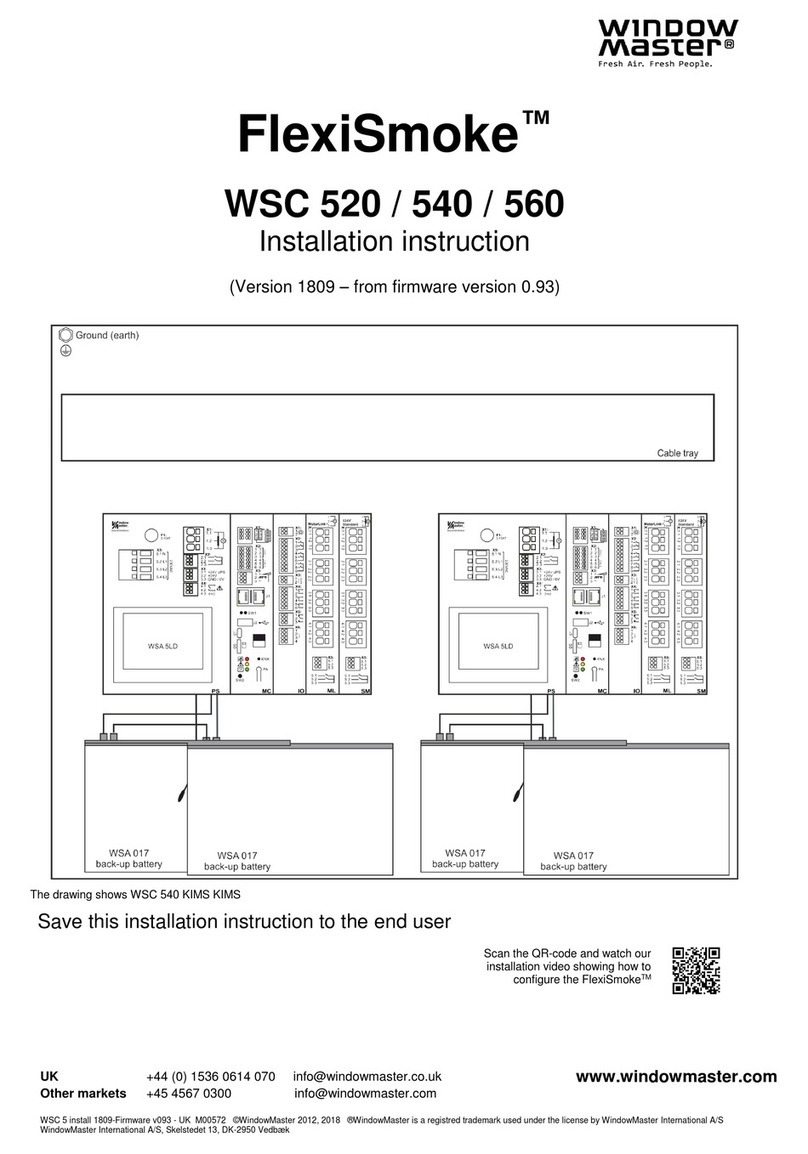
WindowMaster
WindowMaster FlexiSmoke WSC 520 Installation instructions manual

Universal Blue
Universal Blue UVTO1703-22 user manual

Air King
Air King DL4S Important instructions

Air King
Air King DRLC707 operating manual
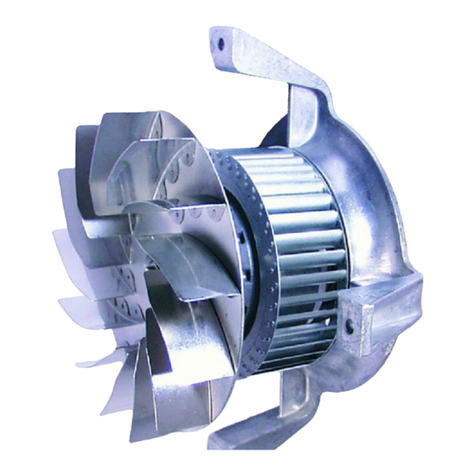
Ebmpapst
Ebmpapst R2E180-AH05-10 operating instructions
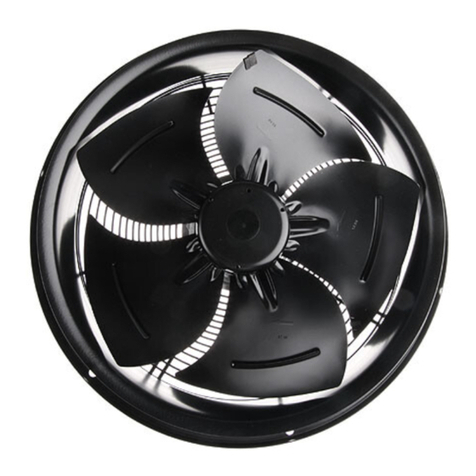
Ebmpapst
Ebmpapst W3G450-CL12-N1 operating instructions



